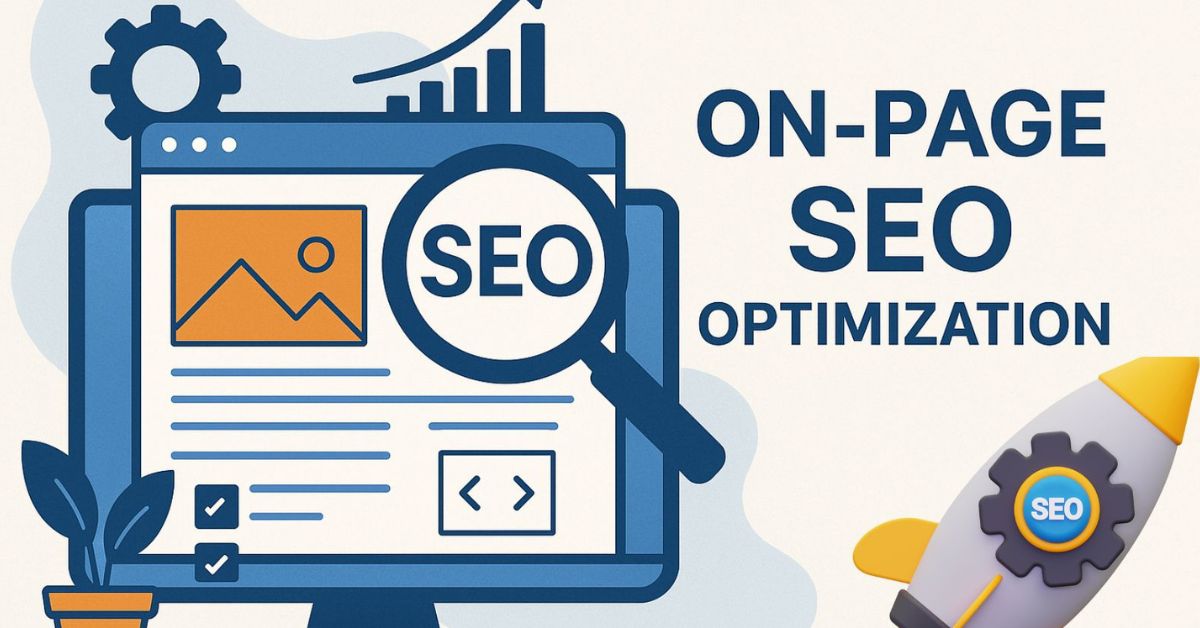Unlike off-page SEO—which focuses on external signals like backlinks and social media mentions—on-page SEO gives you full control over what appears on your website. It ensures that your pages are well-structured, informative, and aligned with search intent, helping both users and search engines understand your content better.
Beyond helping search engines understand the content on a page, effective on-page SEO also ensures that users can instantly grasp what the page is about and whether it matches their search intent. In simple terms, on-page SEO bridges the gap between search engine algorithms and real human experience.
By structuring content in a clear, relevant, and meaningful way, you’re showing search engines what value a visitor would receive upon landing on your page. This helps Google and other search engines confidently recommend your content as a reliable answer to specific keywords or queries.
Ultimately, the goal of on-page SEO is to make it as effortless as possible for both users and search engines to:
-
Understand the topic of the page
-
Navigate the content easily
-
Find valuable, trustworthy, and relevant information
When done right, on-page SEO boosts your visibility in search results and creates a smoother experience for your audience—leading to higher engagement and better conversions.
On-Page SEO vs. Off-Page SEO: What’s the Difference?
When it comes to improving your website’s visibility in search results, understanding the difference between on-page SEO and off-page SEO is essential.
On-page SEO refers to all the optimization efforts you make within your website. This includes content quality, keyword usage, internal linking, meta tags, and page structure. These are elements you have full control over.
In contrast, off-page SEO involves actions taken outside your website to improve its authority and rankings. The most powerful off-page factor is backlinks—links from other trusted websites pointing to yours. Additional off-page strategies include social media signals, influencer outreach, and online reputation building through public relations.
While both strategies play a vital role in SEO success, starting with on-page SEO is often the smartest move—because it’s the part you can fully manage and improve from day one.
Why On-Page SEO Optimization Is Important for Your Website
On-page SEO optimization is one of the most important steps you can take to improve your website’s visibility and attract the right audience. By optimizing key elements like title tags, meta descriptions, headings, and content, you help both search engines and users clearly understand what your page is about.
This type of optimization not only boosts your chances of ranking higher in search results but also improves your site’s credibility and user experience. Visitors are more likely to stay longer, explore more, and take meaningful actions—like subscribing or making a purchase.
In short, investing time in proper on-page SEO optimization can lead to better rankings, more qualified traffic, and higher conversion rates—all essential for growing your online Medium
Keywords, Content, and Modern On-Page SEO: What Really Matters Today
In the early days of SEO, on-page optimization mainly revolved around one thing — keywords. Website owners focused on inserting exact-match keywords into as many key areas as possible: titles, meta descriptions, headers, and body text. The idea was simple — if the keyword appeared often enough, search engines would rank the page higher.
But SEO has changed.
Today, search engines like Google have become far more advanced. They no longer rely solely on specific keywords to understand a page’s topic. Instead, they evaluate overall content quality, context, relevance, and user intent. This means that while keywords still play a role, they are no longer the centerpiece of on-page SEO strategies.
What Is On-Page SEO Really About Now?
Modern on-page SEO focuses on creating valuable, user-first content that answers real questions and solves real problems. It’s about matching your content to what people are actually searching for — not just stuffing keywords.
To help guide this process, many website owners rely on an On-Page SEO Optimization. This checklist acts as a tool to make sure their content stays optimized and up to date with evolving SEO best practices.
Here are the key elements that make on-page SEO effective today:
1. Relevance Over Repetition
Don’t overuse keywords. Instead, make sure your content naturally addresses the search query and uses related terms, synonyms, and context that make sense to human readers. Google understands language far better now — it’s not just scanning for exact keywords.
2. Depth and Quality
Google wants in-depth, well-researched content. “Thin” pages — those with very little useful information — often don’t rank well. Your goal should be to fully cover a topic in a way that educates or benefits your audience.
3. User-Friendly Layout
Make your content easy to read and navigate. Use clear headings, short paragraphs, bullet points, and clean formatting. Avoid excessive ads, popups, or clutter that might frustrate users.
4. Original and Unique
Avoid copying content — even from your own site. Google favors unique content that provides fresh insights or a different angle on a familiar topic.
5. Trust and Authority
Try to position your content as reliable and trustworthy. This can be done by citing credible sources, writing in a professional tone, and using your own expertise or experience in the topic.
6. Intent Matching
Always ask yourself: What is the user looking for when they search this term? Then create content that directly answers that intent — whether it’s to learn, compare, buy, or solve a specific problem.
Final Thoughts
On-page SEO is no longer just about “where” and “how many times” you use a keyword. It’s about how well your content connects with your audience, and how effectively it answers the questions they bring to search engines.
Use tools like Rank Math SEO to fine-tune your content and structure, but always focus on delivering real value. That’s what drives traffic, builds trust, and keeps both users and search engines happy — and it’s also what makes your site AdSense-friendly.
